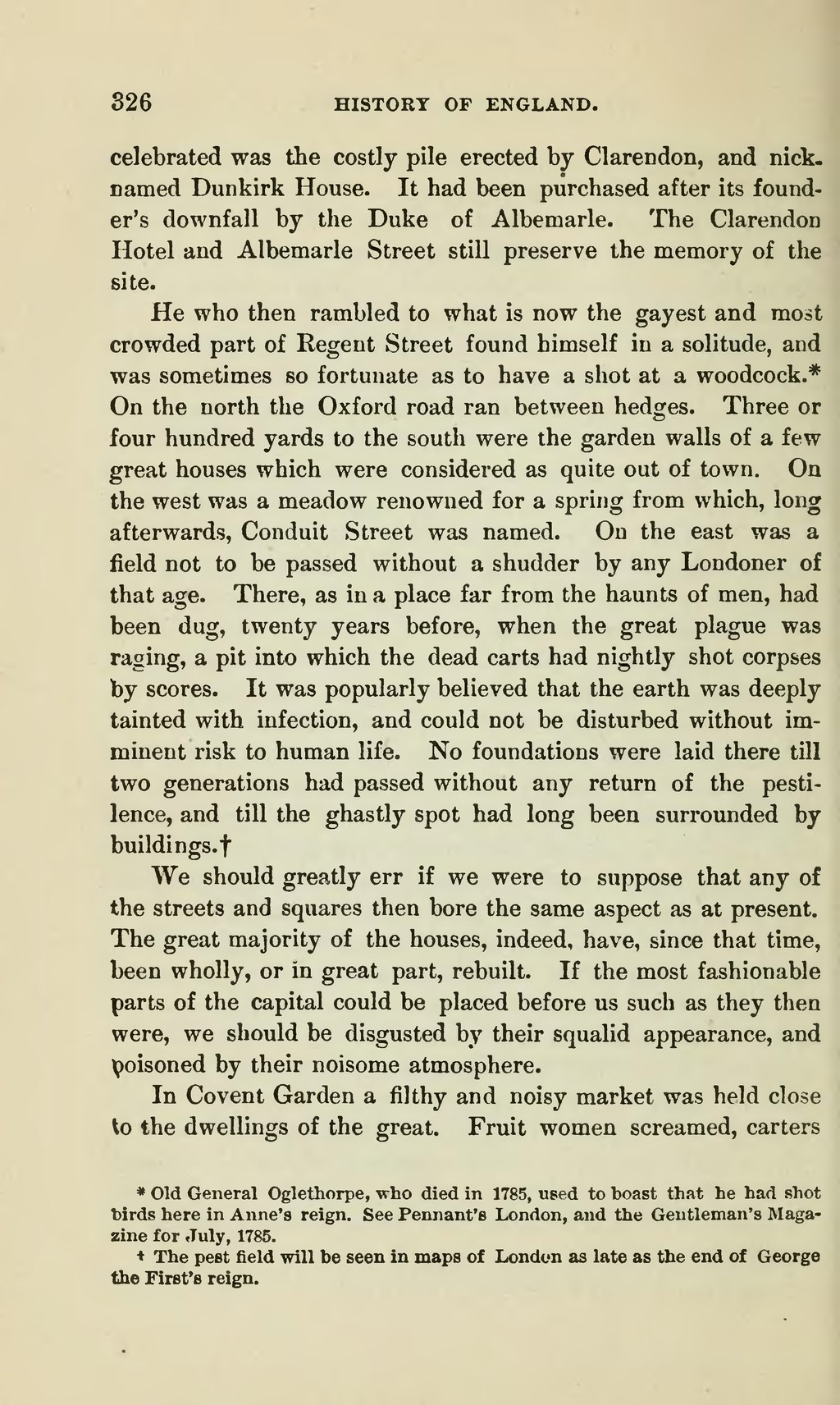celebrated was the costly pile erected by Clarendon, and nicknamed Dunkirk House. It had been purchased after its founder's downfall by the Duke of Albemarle. The Clarendon Hotel and Albemarle Street still preserve the memory of the site.
He who then rambled to what is now the gayest and most crowded part of Regent Street found himself in a solitude, and, was sometimes so fortunate as to have a shot at a woodcock.[1] On the north the Oxford road ran between hedges. Three or four hundred yards to the south were the garden walls of a few great houses which were considered as quite out of town. On the west was a meadow renowned for a spring from which, long afterwards, Conduit Street was named. On the east was a field not to be passed without a shudder by any Londoner of that age. There, as in a place far from the haunts of men, had been dug, twenty years before, when the great plague was raging, a pit into which the dead carts had nightly shot corpses by scores. It was popularly believed that the earth was deeply tainted with infection, and could not be disturbed without imminent risk to human life. No foundations were laid there till two generations had passed without any return of the pestilence, and till the ghastly spot had long been surrounded by buildings.[2]
We should greatly err if we were to suppose that any of the streets and squares then bore the same aspect as at present. The great majority of the houses, indeed, have, since that time, been wholly, or in great part, rebuilt. If the most fashionable parts of the capital could be placed before us such as they then were, we should be disgusted by their squalid appearance, and poisoned by their noisome atmosphere.
In Covent Garden a filthy and noisy market was held close to the dwellings of the great. Fruit women screamed, carters
